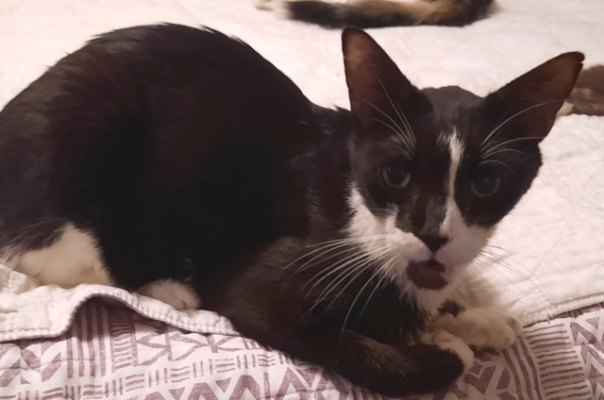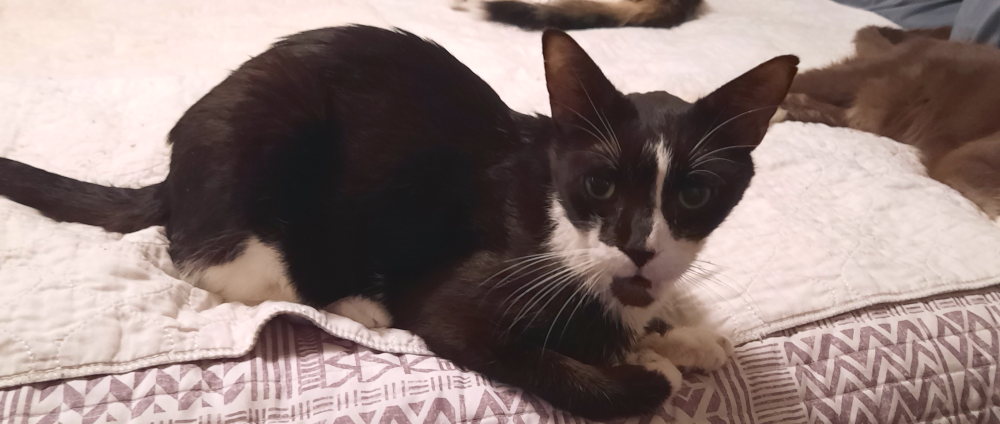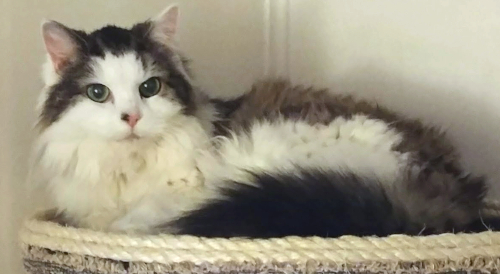 Bringing a feral cat into your home can be one of the most rewarding—and challenging—experiences in pet ownership. It’s not as simple as cracking open a can of tuna and calling it a day. Feral cats, unlike strays or surrendered pets, are truly wild at heart. They’ve grown up without human contact and tend to view people (and indoor living) as giant red flags.
Bringing a feral cat into your home can be one of the most rewarding—and challenging—experiences in pet ownership. It’s not as simple as cracking open a can of tuna and calling it a day. Feral cats, unlike strays or surrendered pets, are truly wild at heart. They’ve grown up without human contact and tend to view people (and indoor living) as giant red flags.
That said, not every feral cat is destined to remain on the outskirts of human society. I’ve had the privilege of sharing my home with two former ferals—Bubbles and Bentley—and they taught me that with time, patience, and a whole lot of love, transformation is possible. But not every story unfolds that way, and that’s why I wanted to create this post—not just to celebrate the wins, but to help others understand what it really takes to make this work.
Meet Bubbles: From Backyard Visitor to Full-Time Indoor Queen
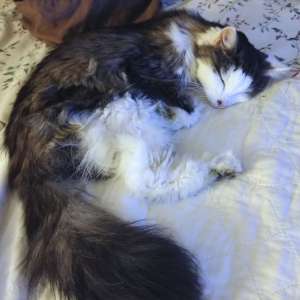 Our first feral experience began with Bubbles—who we simply called “Kitty” at the time. She was a semi-social outdoor cat who would show up now and then during our dog Buddy’s bathroom breaks. Bubbles wasn’t shy about showing affection—rubbing against our legs, chirping at us—but she had boundaries. Pick her up? Swat. Let the dog get too close? Swat. In fact, she’d disappear for hours after too much contact.
Our first feral experience began with Bubbles—who we simply called “Kitty” at the time. She was a semi-social outdoor cat who would show up now and then during our dog Buddy’s bathroom breaks. Bubbles wasn’t shy about showing affection—rubbing against our legs, chirping at us—but she had boundaries. Pick her up? Swat. Let the dog get too close? Swat. In fact, she’d disappear for hours after too much contact.
But like many ferals, food was the gateway to trust. We started leaving meals out for her. Slowly, her visits got longer. Then one day, Bubbles showed up and wouldn’t leave. She was unusually clingy, and something seemed different. We brought her inside, and to our surprise—she was pregnant.
That moment changed everything. Bubbles gave birth in our home, and from that point forward, she never wanted to leave. Even holding her up to a window or the door would trigger a flight response. The outside world had lost its appeal. She had found safety, warmth, and family—and she wasn’t letting it go.
Bentley’s Journey: The Survivor With a Scar
 Our second feral success story came through adoption. Bentley was rescued from a shelter that specialized in outdoor cats, many of which had been part of catch-and-release programs. He had the telltale clipped ear, which meant he had been fixed and released at some point—a common practice to control outdoor cat populations. Bentley was adopted by a kind soul who passed away shortly after adopting him. We took over Bentley’s adoption and he’s been with us ever since.
Our second feral success story came through adoption. Bentley was rescued from a shelter that specialized in outdoor cats, many of which had been part of catch-and-release programs. He had the telltale clipped ear, which meant he had been fixed and released at some point—a common practice to control outdoor cat populations. Bentley was adopted by a kind soul who passed away shortly after adopting him. We took over Bentley’s adoption and he’s been with us ever since.
Bentley had the instincts of a survivor. You could tell food had been scarce in his past. Even after settling in, he’d try to dominate every food bowl in the house. To this day, we feed him separately—it’s just part of who he is.
What’s remarkable is that, despite his rough-and-tumble roots, Bentley has no desire to go back outside. He shies away from open doors and seems content with watching the world through the window. Like Bubbles, he’s made peace with the indoors and has claimed it as his own.
What to Know Before You Bring a Feral Cat Inside
Now, before you think every feral story ends in cuddles and window sunbathing, let’s take a step back. Bubbles and Bentley are success stories, but they came with challenges—and not every feral cat will adapt the same way. If you’re thinking of welcoming a feral cat into your home, here’s what you should know.
The Potential Upsides
- You’re Saving a Life – Outdoor life is rough. Between traffic, predators, disease, and harsh weather, feral cats face constant danger. Offering a safe haven is an incredible act of kindness.
- You’re Helping the Bigger Picture – Taking in and spaying/neutering a feral cat helps curb the population crisis. Every fixed cat is one less contributing to the cycle of overpopulation.
- The Bond Can Be Extraordinary – When a formerly fearful cat finally leans into your touch or curls up beside you for the first time, it’s unlike any bond you’ve felt before. That trust is earned, and that makes it powerful.
- Unexpected Pest Control – Even if your feral friend never becomes a lap cat, their hunting instincts can keep your space rodent-free.
- A Deep Sense of Fulfillment – There’s something uniquely satisfying about helping a creature that once flinched at your presence find peace under your roof.
- Quirky, Endearing Traits – Feral cats often retain a sense of wild independence and unique behavior quirks that can be fun to watch and get to know—especially when they’re finally comfortable enough to be themselves.
The Challenges to Consider
- A Long Adjustment Period – These cats may hide for weeks, avoid all contact, and startle at every sound. This can be emotionally tough, especially if you’re hoping for an affectionate pet.
- Aggression Is a Possibility – Fear-driven aggression is common. Bites, scratches, hissing—it’s all part of their defense system. You’ll need to read body language closely and respect their boundaries.
- Litter Box Woes – Teaching a cat that’s only known dirt and grass to use a litter box can be a messy process. It’s possible—but it requires patience. We were lucky with both Bubbles and Bentley in that they took to the litter box rather quickly.
- Household Destruction – Some cats cope with anxiety by scratching furniture, climbing things they shouldn’t, or bolting across the room like they’re dodging predators. It’s not personal—it’s instinct. We have a house full of cat trees and scratching posts so Bentley (our second feral) had not issues, however Bubbles ripped up all the furniture all by herself even with scratching posts.
- Lifelong Wariness – Even after months or years, some feral cats remain aloof. They might tolerate you but never seek affection, and you’ll have to be okay with that.
- Veterinary Struggles – Getting a feral cat into a carrier, let alone on an exam table, can be traumatic for both of you. Sedation is often required, which adds expense and stress.
- Huge Time Investment – This is not a weekend project. It might take months—or longer—to see real progress. You’ll need to commit fully, without any expectations.
- No Guarantees – And here’s the hard truth: some feral cats just aren’t meant to live indoors. Despite your best efforts, they may be happier as part of a managed outdoor colony.
We were extremely lucky with Both Bubbles and Bentley as neither seemed like they wanted to escape and return to the outdoors. It was a constant tolerance of us with them and them with us. We got along and they loved there new home.
Final Thoughts: Every Cat Deserves a Chance, But Not Every Cat Will Thrive Indoors
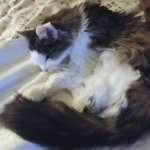 Taking in a feral cat isn’t just about rescuing an animal—it’s about understanding them. It’s about meeting them where they are, not where you hope they’ll be. Bubbles became the clingiest house cat you’d ever meet. Bentley’s found peace but still guards his food like it’s a warzone. And yet, both have found their version of home—and we’ve found a deeper connection than we ever expected.
Taking in a feral cat isn’t just about rescuing an animal—it’s about understanding them. It’s about meeting them where they are, not where you hope they’ll be. Bubbles became the clingiest house cat you’d ever meet. Bentley’s found peace but still guards his food like it’s a warzone. And yet, both have found their version of home—and we’ve found a deeper connection than we ever expected.
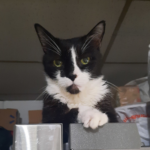 If you’re considering taking in a feral cat, prepare yourself for a journey. It won’t always be easy. But if you’re patient, observant, and compassionate, you might just be the turning point in a cat’s life.
If you’re considering taking in a feral cat, prepare yourself for a journey. It won’t always be easy. But if you’re patient, observant, and compassionate, you might just be the turning point in a cat’s life.
And who knows… you might find that your life is better for it, too.


